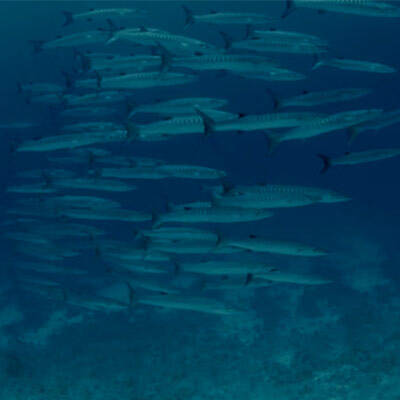TEXT: FRANK LINDNER | MUSIC: KEENO - LAND, SEA & SKY
Slowly but surely, public awareness of the current, disconcerting state of global fish production is growing. 11 disturbing fishy facts.
Every year we catch between 90 and 100 million tons of fish, crustaceans, and assorted shellfish. 90% is hauled up from the world’s oceans, with 10% coming from lakes and rivers.
FAO, 2016
Total world fishery production (capture plus aquaculture) is projected to expand, reaching 196 million tons in 2025.
FAO, 2016
World per capita fish supply reached a new record high of 20 kg in 2014, thanks to vigorous growth in aquaculture.
FAO, 2016
China is the largest producer and consumer of fish. They account for 33% of the world’s total.
FAO, 2016
25% of all fish worldwide is caught illegally.
Food Inspiration, 2016
56.6 million people were engaged in the primary sector of capture fisheries and aquaculture in 2014, of whom 36% were engaged full time.
FAO, 2016
29% of commercially traded species are subject to overfishing.
FAO, 2016
27 million tons of fish are discarded as waste every year.
FAO, 2016
The bycatch-to-shrimp ratio can be roughly 10:1 in tropical areas.
Worldwatch Institute, 2004
The Gulf of Mexico contains an area of up to 20.000 km2 (the size of New Jersey) referred to as a dead zone – because nothing can live there due to the oxygen-depletion caused by fertilizer run-off.
Journal of environmental quality, 2001
Based on current trends, the global fishing industry will be in a state of complete collapse by 2048.
Science, 2006
Slowly but surely, public awareness of the current, disconcerting state of global fish production is growing. 11 disturbing fishy facts.

Every year we catch between 90 and 100 million tons of fish, crustaceans, and assorted shellfish. 90% is hauled up from the world’s oceans, with 10% coming from lakes and rivers.
FAO, 2016

Total world fishery production (capture plus aquaculture) is projected to expand, reaching 196 million tons in 2025.
FAO, 2016

World per capita fish supply reached a new record high of 20 kg in 2014, thanks to vigorous growth in aquaculture.
FAO, 2016

China is the largest producer and consumer of fish. They account for 33% of the world’s total.
FAO, 2016

25% of all fish worldwide is caught illegally.
Food Inspiration, 2016

56.6 million people were engaged in the primary sector of capture fisheries and aquaculture in 2014, of whom 36% were engaged full time.
FAO, 2016

29% of commercially traded species are subject to overfishing.
FAO, 2016

27 million tons of fish are discarded as waste every year.
FAO, 2016

The bycatch-to-shrimp ratio can be roughly 10:1 in tropical areas.
Worldwatch Institute, 2004

The Gulf of Mexico contains an area of up to 20.000 km2 (the size of New Jersey) referred to as a dead zone – because nothing can live there due to the oxygen-depletion caused by fertilizer run-off.
Journal of environmental quality, 2001

Based on current trends, the global fishing industry will be in a state of complete collapse by 2048.
Science, 2006
